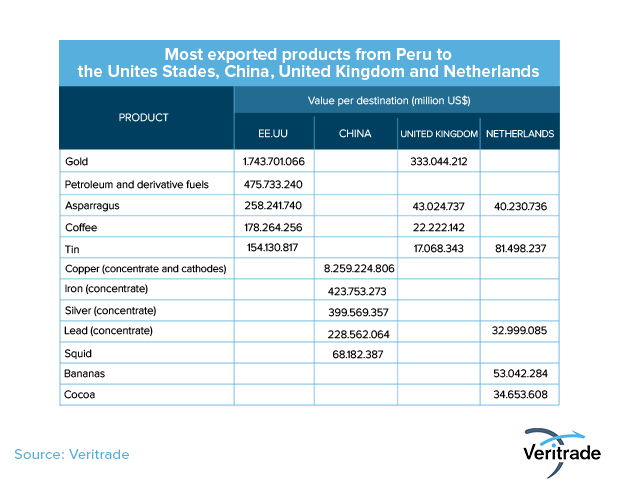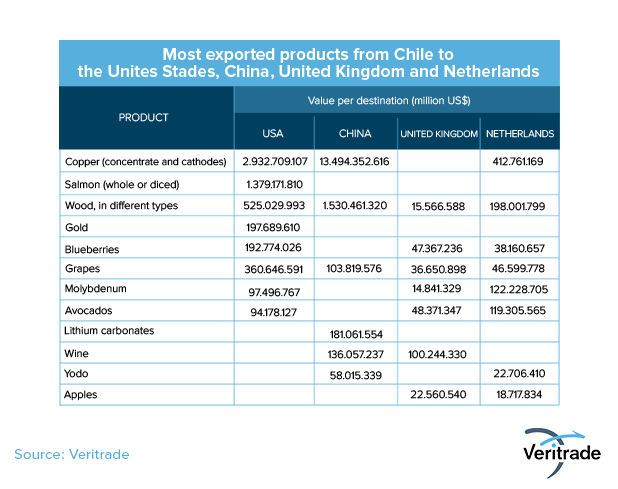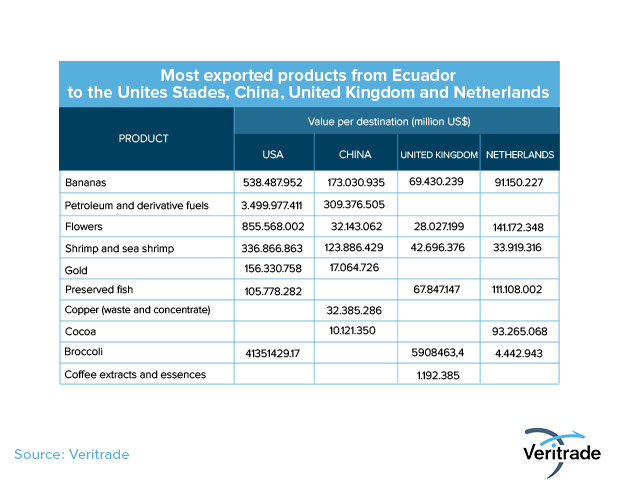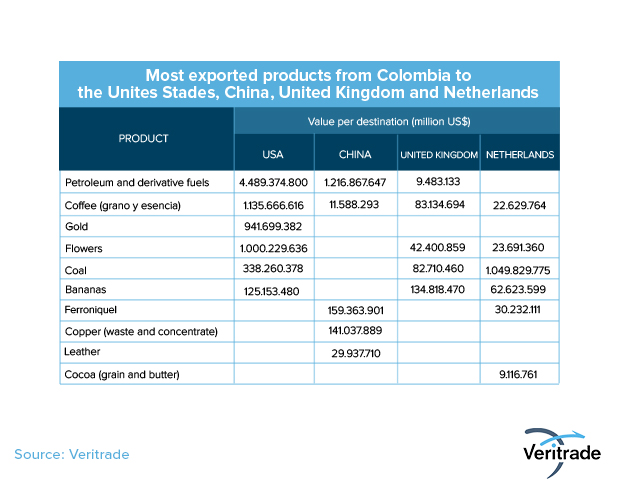What do the countries of the South American Pacific export?
Published on 30 April 2018
The following tables give an idea of the shipments to the main markets
In a last note, we highlight that Latin America is the source of 13% of food exports globally. However, the region is also very important for the supply of hydrocarbons and minerals.
Geography plays in favor, and allows the countries of the zone to be competitive when extracting hydrocarbons from the zocalo and the jungle subsoil. The forest, especially in its high areas, provides ideal conditions for the development of the coffee and cacao industries, and a little more towards the coast, the same rainy climate also facilitates the development of bananas.
Hydrobiological resources are another important element in the export portfolio. The Humboldt and Equatorial currents allow the extraction of species such as tuna, giant squid, mahi mahi, horse mackerel and mackerel, and the conditions on the coasts are ideal for the development of aquaculture, both salmon in Chile, as of prawns and shrimp in northern Peru and southern Ecuador.
Finally, it is worth highlighting the mineral wealth of the countries of the South American west. Without the Peruvian and Chilean copper, nor the Ecuadorian and Colombian coal, the economy of the region would have much less relevance. To these elements are added other high value, such as precious metals, and those that are used as a valuable input in the technology industry, including tin, nickel and lithium.
The following four tables show the main export products of each country of the South American Pacific towards its main destinations in the world: the United States, China; and in Europe, Holland (gateway to the continent) and the United Kingdom (with an independent logistics chain).




It is important to mention that the tables only include the products represented by the main tariff items for each destination. Also, it should be added that many of these items have been added in groups, as is the case of petroleum and derived fuels, flowers, and wood in various forms, among others.
As a final observation, the fact that the export portfolio to China is different from those of the United States and Europe, very similar to each other, stands out. In the case of the eastern country, raw materials such as fishmeal, wood, copper and other metals for industrial use predominate. However, China is also an important destination for fruit and vegetables, and it is becoming increasingly consolidated as a space for diversification, as the consumer is educated.
In general terms, the region is a source of diversity and efficiency that the world can take advantage of.
For more information about exports from these countries, you can enter the Veritrade system.
Request your test here: https://bit.ly/2JC3YtK